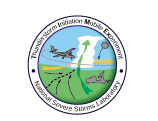
 Ziegler-1b
Ziegler-1b
Hypothesis (Ziegler-1b) concerning convective initiation along mesoscale boundaries |
|
|
Conrad Ziegler on August 27, 1997 at 22:17:36: Background: Past observational studies have noted that cumulus clouds may develop at locations with enhanced boundary layer lifting along mesoscale boundaries given sufficient ambient moisture. The predominant scales of effective lifting in those studies is mesoscale (~ 1-10 km length scale), that is, greater than the short length scales commonly associated with turbulent mixing. Cloud-mesoscale modeling studies of drylines confirm the notion that a combination of deep mesoscale lifting with adequate moisture results in convective initiation. It has been proposed that the circulations accompanying drylines, sea breeze fronts, the Denver Convergence Zone, and other boundaries, may interact in an arbitrarily complex fashion with horizontal convective rolls or open cellular convection to generate localized lift sufficient for convective initiation. Regardless of such complexities that govern vertical motion in the boundary layer, the likelihood of convective initiation may be represented by a simple combination of local boundary layer parameters (Ziegler and Rasmussen, WAF 1998). Hypothesis: Convective initiation requires deep mesoscale boundary layer convergence and adequate boundary layer moisture, subject to the constraints that updraft width exceeds the maximum local advective length scale and updraft depth exceeds the local Lifting Condensation Level (LCL) and Level of Free Convection (LFC). This hypothesis may be expressed by the following joint conditions: (1) For SHALLOW cumulus convection, R(LCL) = H/LCL > 1 and R*(LCL) = WxL/UxLCL > 1; (2) For DEEP cumulus convection, R(LFC) = H/LFC > 1 and R*(LFC) = WxL/UxLFC > 1; where by definition U = flow speed across updraft, W = peak updraft speed, L = updraft width, and H = height of peak updraft. NOTE: This hypothesis is an updated version of hypothesis Ziegler-1, and responds to Koch's comment on the earlier version suggesting that turbulent scales of motion (10's-100's of meters) would have to be measured. This updated version clarifies that convective initiation is forced by lift on scales of ~ 500 m - 10 km, which can be resolved by mobile, ground-based Doppler radar. |
|
| Use ground-based and airborne multi- and pseudo-dual Doppler radar clear air measurements to estimate 4-D mesoscale airflow circulations and air parcel trajectories in the CBL. Estimate surface-based and boundary layer parcel LCL and LFC using fixed and mobile surface observations, RPV traverses, and M-CLASS soundings. Use cloud/mesoscale data assimilation to blend above observations with high-resolution DIAL water vapor measurements to estimate LCL and LFC from derived virtual temperature field. Use visible imagery to locate clouds horizontally. Stratify cases with or without shallow/deep convection by respective R and R* values. Comment: Each occurrence of a mesoscale updraft core along a given boundary on a given case day represents a data point for examining correlation. Results will be stratified by case day and season to evaluate predictability using the parameterization. | |
| Shallow cumulus: either occurs with small R(LCL) and R*(LCL) values; or does not occur despite large R(LCL) and R*(LCL) values. Deep convection: either occurs with small R(LFC) and R*(LFC) values; or does not occur despite large R(LFC) and R*(LFC) values. | |
|
The following appear in order; discussion points may directly refer to one or more comments preceeding it.
Click here to comment on this hypothesis. Please reference: ZIEGLER-1b. |
|